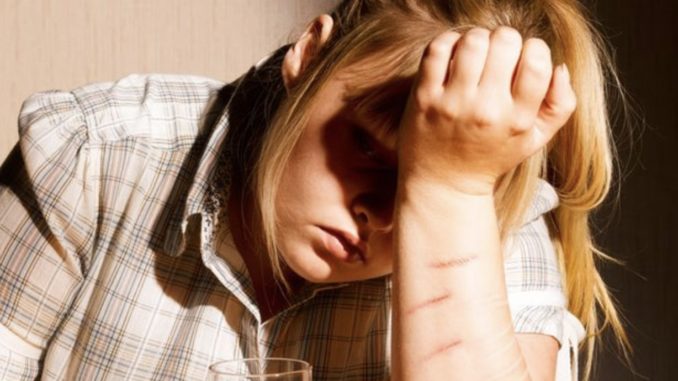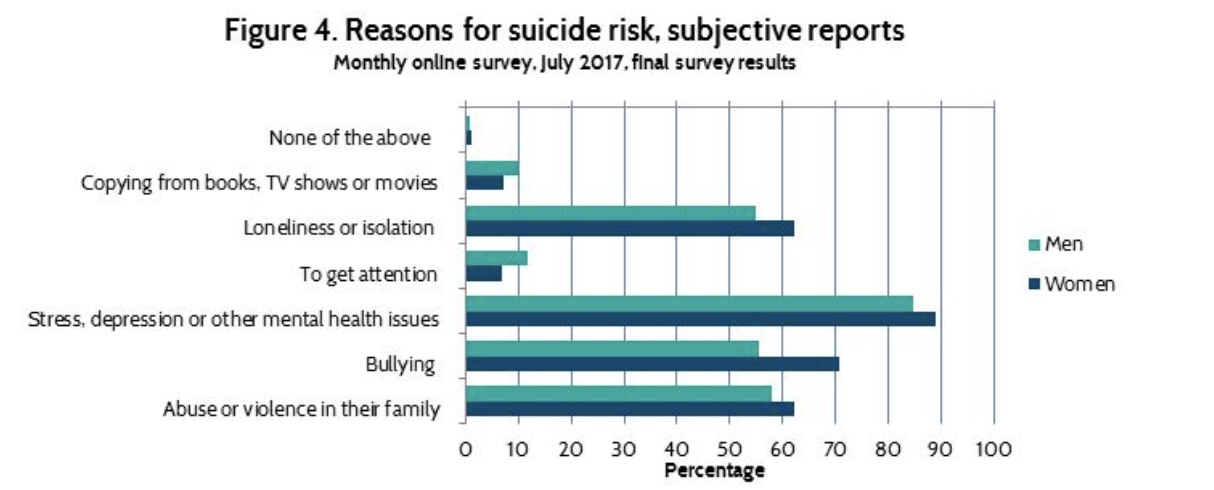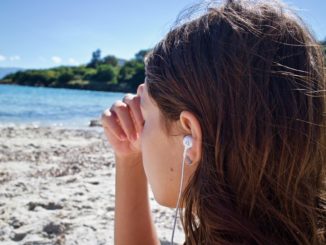
About my news feature:
Recently, the Coalition has proposed to invest in mental health initiatives to help better explore solutions to youth suicide. My goal is to explore the triggers of youth self-harm and suicide, and how to prevent self-harm in time before it becomes more serious.
Mental illness is a very common disease. the Australian Bureau Statistics (ABS) points out, 20% of Australians will suffer from mental illness and the highest incidence rate is among young people aged 18-24. Self-harm is one of the many possible negative consequences of mental illness.
Self-harm is mainly the act of deliberately hurting yourself but not killing yourself in order to alleviate the feeling of pain. Meanwhile, most people start self-harming when they are young.
In addition to cardiovascular disease, self-harm and suicide are among the leading causes of death in Australia, according to the ABS report on the main causes of death in Australia.
In 2017, 3,128 people died of intentional self-harm, compared with 9.1% growth in 2016. At the same time, the number of men who choose to harm themselves is three times that of women and the possibility of asking for help is low.
Online publication
the Buzzfeed
Angles:
I would like to write this news feature from two angles.
Firstly, explore the reasons behind self-harm behaviors. the Relationships Australia did research about the youth self-injury and suicide. Among the findings, stress and depression were cited as the leading causes of self-harm and suicide, with bullying and isolation accounting for 61 per cent and domestic violence 69 per cent, respectively. Moreover, I would like to continue in-depth exploration based on these three parts.

Secondly, how to avoid the occurrence of self-injury is also the angle that my news feature needs to pay attention to. Self-harm is lighter than suicide, and positive guidance or interventional psychotherapy can control suicide behavior more effectively when the results are controllable.
Target groups:
Firstly, the high-incidence age group of self-harm and suicide. Let them judge or realize in advance that they may have mental illness by reading this feature. Secondly, the parents of high-incidence people. As the closest relationship, it is possible to conduct positive guidance in a timely manner.
Resource:
The information source of this news feature comes from online sources, including government statistics from the ABS and survey data from Relationships Australia, some institutes, such as Lifeline, focusing on mental health and adolescent self-harm, and academic papers from experts. Furthermore, I will enrich my news feature with the help of future interviews.
The achievement of Hypertextuality, Multimediality, and Interactivity:
Use hyperlinks to link some statistics reports and related conceptual explanation. At the same time, multimedia is achieved by inserting, for example, an interview video or a video which helps to expand understanding. Finally, a comment area will be set up for the reader to participate in.





I like this idea since mental health is definitely a newsworthy topic. The news you chose is also related to the 2019 Australian election. Perhaps this is an aspect that could be mentioned. Youth self-harm is a global issue, so you might also look at other cases around the world, such as China, Japan, and the United States. Analyse how other countries address this issue and make a comparison with Australia. Maybe you could speak with a counsellor at the Mental Health Center in our school. Their interviews might be helpful. Finally, I like the way you used multimedia.